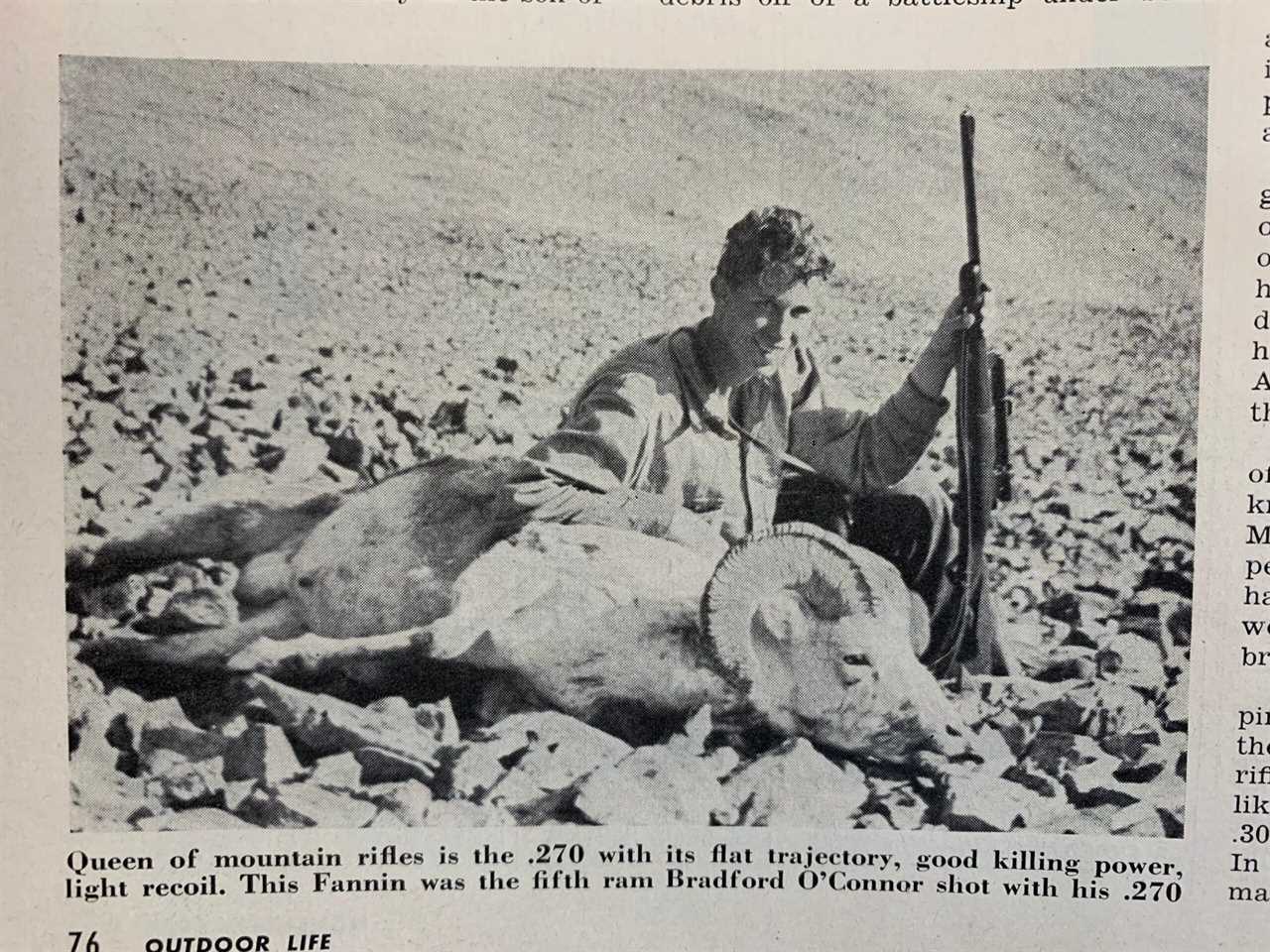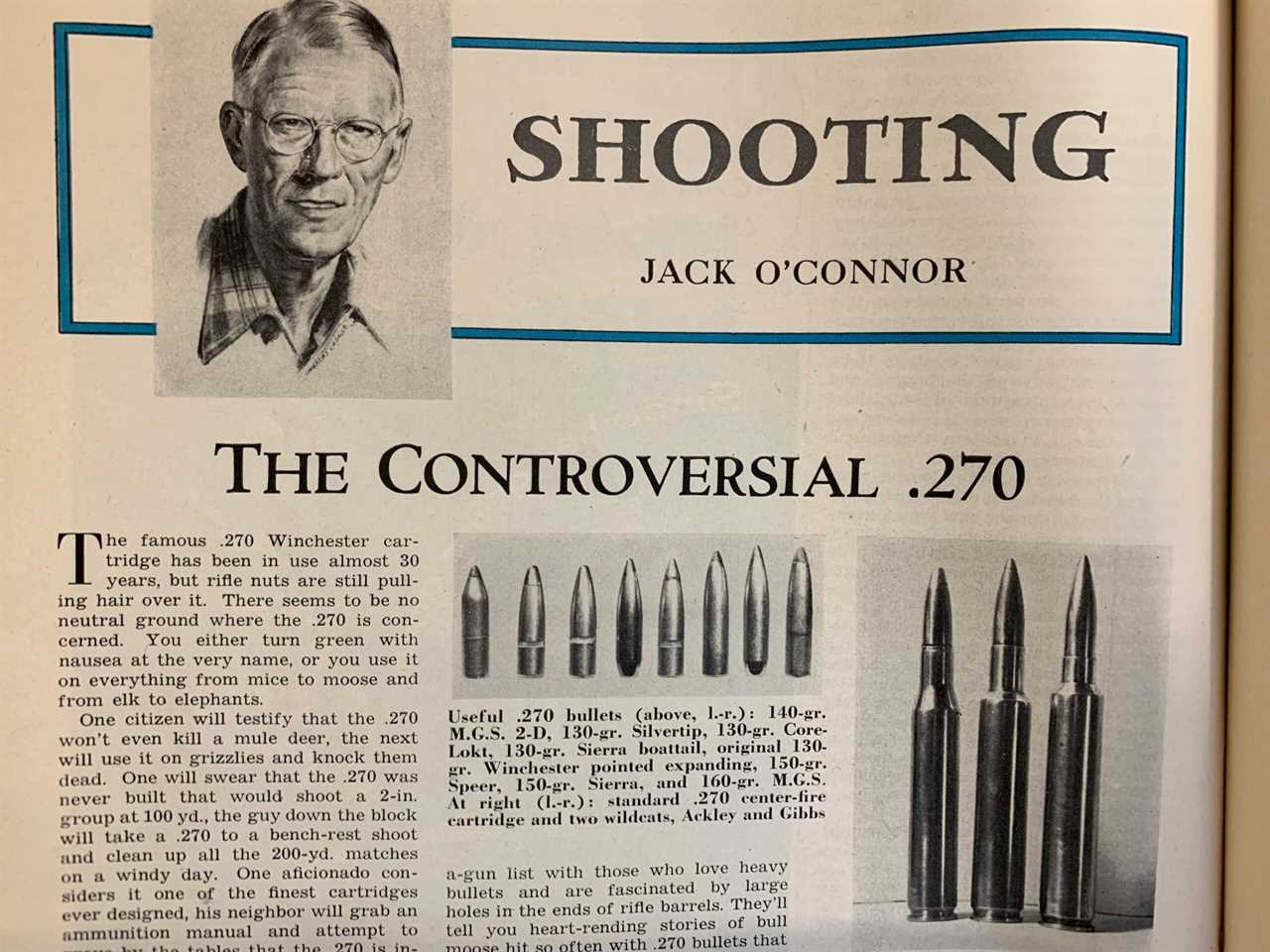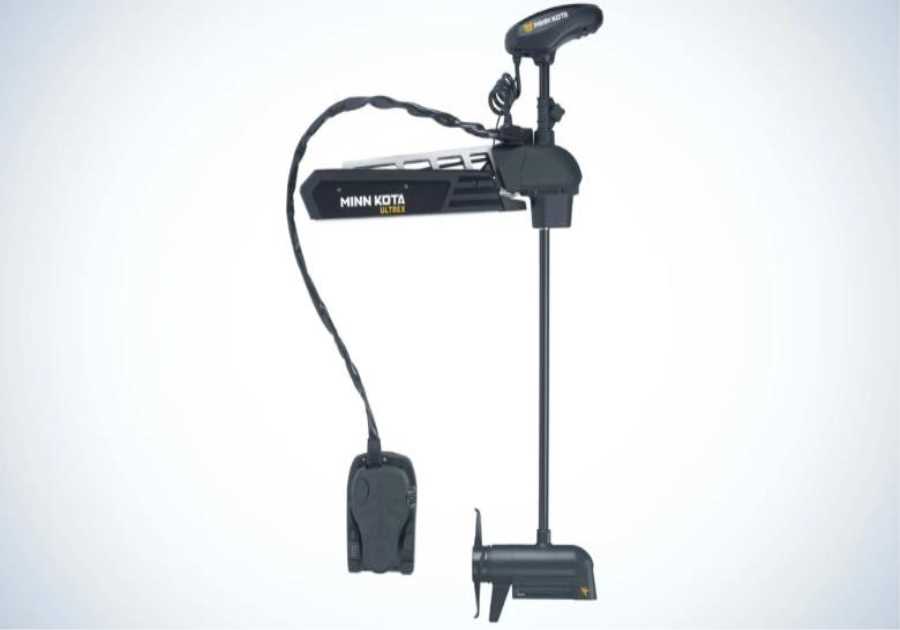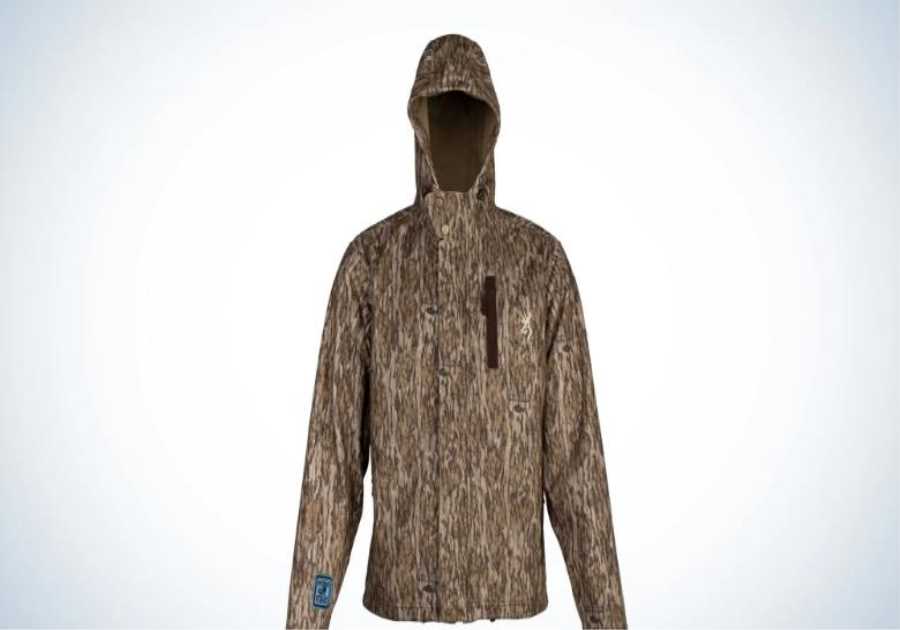||

I often find myself baffled by the abhorrence that grown adults can harbor for something as innocuous as a rifle cartridge. You know the cartridge I’m talking about. To be fair, I get that the annoyance is often not with the cartridge itself, but with its popularity—particularly the real or perceived exaggerations of its performance characteristics. The vitriolic response to the mere mention of the word “Creedmoor,” and its ability to transform readers into angry, babbling cartridge philosophers is surprising. Equally surprising is the ability of second-shift gun counter attendants to convince any customer that a 6.5 Creedmoor is all they could ever want. But we probably shouldn’t be surprised by any of it. We’ve been here before.
Looking back in history provides perspective on many things—and that includes rifle cartridges. Times may have changed, but people haven’t. When I began peeling through the paragraphs of one of Jack O’Connor’s shooting columns in the November, 1954 issue of Outdoor Life, it felt oddly familiar. O’Connor wasn’t around for the internet, but it seemed that here was still no lack of controversy and opinion on the rifle cartridges he covered. Many who now herald the “old reliable” .270 Win. today would likely scoff if I said it was the 6.5 Creedmoor of its day. But reading through the blunter points of O’Connor’s column, you could just as easily substitute “6.5 CM” for .270, and the story would be just as relevant today as it was when published, almost 70 years ago (note that O’Connor wrote this column some 30 years after the cartridge had been introduced).
With more modern components, the .270 is still an incredibly useful and relevant cartridge. I won’t argue that the 6.5 Creedmoor matches it in power or trajectory, because it doesn’t in most cases. However, there are metrics by which the Creedmoor, and most of the cartridges utilizing Modern Cartridge Design principles, are better. It’s OK to acknowledge that progress without taking offense. The 6.5 Creedmoor shooting a 143-grain ELDX bullet will lag slightly behind the .270 shooting a similar 145-grain ELDX bullet at normal hunting ranges, but not by much. The win for the Creedmoor, if you want to call it that, is that it does it with around 30 percent less powder, and much less recoil—both factors that O’Connor would have appreciated.
One can beat the brush on ballistics and hand load combinations to exhaustion, something O’Connor loved to do. But the point here is that even after decades of success, folks were still arguing about the effectiveness (or ineffectiveness) of the .270 Winchester. Perhaps hunters never came to agree on the .270. Maybe they just found newer cartridges to argue over.
The Controversial .270, by Jack O’Connor
The famous .270 Winchester cartridge has been in use almost 30 years, but rifle nuts are still pulling hair over it. There seems to be no neutral ground where the .270 is concerned. You either turn green with nausea at the very name, or you use it on everything from mice to moose and from elk to elephants.
One citizen will testify that the .270 won’t even kill a mule deer, the next will use it on grizzlies and knock them dead. One will swear that the .270 was never built that would shoot a 2-in. group at 100 yd., the guy down the block will take a .270 to a bench-rest shoot and clean up all the 200-yd. matches on a windy day. One aficionado considers it one of the finest cartridges ever designed, his neighbor will grab an ammunition manual and attempt to prove by the tables that the .270 is inferior to the little .300 Savage.
The .270 is particularly on the son-of-a-gun list with those who love heavy bullets and are fascinated by large holes in the ends of rifle barrels. They’ll tell you heart-rending stories of bull moose hit so often with .270 bullets that hunks flew off the poor creatures like debris off of a battleship under bomb attack. Yet the moose went on chomping on willow leaves, apparently supposing that the rifle fire was thunder and that the bullets were mosquitoes.
One anti-.270 man who does a spot of guiding wrote a story in which he told of chasing a bull elk that “had been only wounded by a .270” all over hell’s half acre. The inference was that if the dude had used a musket shooting a heftier bullet all would have been well. At the end of the story it came out that the elk had a broken front leg.
Now, in my day I’ve shot a few head of game and I’ve seen other citizens knock over a few with assorted calibers. Maybe I’ve associated with the wrong people and used the wrong rifles, but I have yet to see any cartridge that would consistently knock over game by breaking a leg.
But controversy or not, the fast-stepping cartridge has gained a big share of the American market for high-powered rifles and has become a world cartridge like the 7 x 57 mm., the 8 x 57, the .30/06, and the .300 and .375 Magnums. In the United States, Winchester has manufactured the Model 54 and Model 70 in .270. Remington has made the bolt-action Models 720 and 721 and the slide-action Model 760 for it. Sears, Roebuck & Co.’s Model 50 J. C. Higgins rifle is available in .270.
Rifles for the cartridge are built in Sweden by Husqvarna, in Austria by Steyr (Mannlicher-Schoenauer) and in Belgium by the Fabrique Nationale. Various British gun makers have built rifles for the .270 cartridge on Mauser and Model 1917 Enfield actions—and have even turned out a few double rifles for the cartridge.

At the time it was introduced in 1925, the .270 was the flattest-shooting standard big-game cartridge in the world. With the 130-gr. bullet, which has killed very dead all sorts of large and ponderous animals, it still is. With the 100- gr. bullet in the factory loading, which is designed for varmints·, the .270 has a trajectory almost as flat as that of the .220 Swift.
Because of this flat trajectory, high velocity, good accuracy, and mild recoil, the .270 is the easiest standard cartridge to make well-placed hits on game with, at long and uncertain ranges, that I have ever used. For mountain hunting my practice has been to sight in a .270 using 130-gr. factory loads to put the bullet 3 in. above line of scope sight at 100 yd. The bullet then lands 4 in. high at 200 yd. and on the button at somewhere between 275 and 300 yd., depending on the shape of the point.
In spite of rumors to the contrary, 300 yd. is a right fur piece. Let us say that we are on at 275 yd. and only 2 in. low at 300. Then we have a point-blank range of about 325 yd., as the bullet will not rise or fall more than 4 in. from line of aim up to that distance.
Beyond that, if our hunter holds on the backbone he’ll make a hit in the lungs on a large animal like a moose or an elk to well over 400 yd. The drop between 275 and 400 yd. with factory loaded bullets like the 130-gr. Silvertip and the 130-gr. pointed soft-point CoreLokt is about 15 in. With some bullets and with special handloads it is a good deal less.
Those who want to disparage the .270 by the use of ballistics figures always seize on the 150-gr. round-nose factory bullet having a muzzle velocity of 2,770 foot seconds. They say that this load proves the .270 inferior to the .30/06, since the figures show that a 150-gr. bullet in the .30/06 leaves the muzzle at 2,980 foot seconds. They also point to where it says in the booklet that the retained velocity of the 150-gr. .300 Savage bullet at 300 yd. is 1,800, while that of the 150-gr. round-nose .270 bullet is 1,750. Bingo! This proves, they say, that the .300 Savage is superior to the .270 as a long-range cartridge.
In coming out with such arguments, the boys forget a good many things.
The most obvious is that the factory 150-gr. .270 load is a special-purpose load for use on deer in brush and timber. The round-nose bullet is not designed to retain velocity well but instead to get through brush with a minimum of deflection. Velocity is held down to give less tissue destruction at short ranges than is the case with the fast stepping 130-gr. bullet. As we shall see, a 150-gr. bullet can be pushed along in a .270 a good deal faster than 2,770.
Another little detail is that a 150-gr. .30 caliber bullet and a 150-gr. .270 are not at all comparable. A bullet with a diameter of .277 in. and a weight of 150 gr. has a sectional density of .278, or about that of a .308 bullet weighing 190 gr. To compare the 150-gr. .30 caliber bullet with a .270, the .270 bullet should weigh around 120 gr. While we are at it, the 130-gr. .270 bullet has a sectional density of .241 or in the neighborhood of a 160-gr. bullet in .30 caliber.
Still another little detail is that handbook figures on velocity must on occasion be taken with a grain of salt. I have yet to see any .30/06 factory load with the 150-gr. bullet which would turn up in my own .30/06 rifles quite as much velocity as it is supposed to, when tested on the Potter chronograph to which I have access. Factory load A in my own pet .30/06 gave with the 150-gr. bullet an average muzzle velocity of 2,870 foot seconds-about 100 less than published dope. Factory load B gave 2,915.
On the other hand, the .270 stuff I have chronographed is apparently loaded to full advertised velocity. Three brands of factory ammunition with 130-gr. bullets chronographed as follows in a .270 with a 22-in. barrel: A, 3,127 foot seconds; B, 3,132; C, 3,185.
An experimenter I know decided some years ago to develop the ideal flat-shooting cartridge for mountain game. After a couple of years of necking down and reshaping this case and that he concluded he had found no combination of case, bullet. and powder charge that would beat the standard .270 enough to cause any great rejoicing.
There are wildcats which give ballistics somewhat superior to the .270, but usually at considerable cost. The various big blown-out .300 Magnums are the finest long-range cartridges in existence for the shooter who can handle their very husky recoil. It is one thing to shoot accurately with a .270 having 15 foot pounds of free recoil, and quite another to shoot accurately with a lightweight Magnum rifle that kicks almost twice that much. No matter how flat the trajectory is, it does no good if a rifle recoils so severely that the man behind it cannot shoot it accurately. Not many can handle more recoil than is given by rifles of the .30/06-.270 class.
The wildcat .270 and 7mm. Magnums give somewhat more velocity than standard .270 factory loads; but using handloads with certain slow-burning powders and heavy bullets the standard .270 does about as well as any of the Magnums. A gun-nut friend of mine had a wildcat .270 based on the necked down .30 Newton case. Long experimenting with a chronograph showed him that he could get just as much velocity at apparently the same pressure out of the standard .270 as he could with his large-capacity wildcat. This settled, he quietly sold the superduper to a character who was bemused by the wicked-looking cartridge case.
Not too long ago I got my mitts on a wildcat 7mm. According to the stories, it shot so flat that you held right on ’em to 500 yd., and it went so fast that you practically didn’t have to lead a running antelope at 300 yd. Must be the wonder gun! But the old pickle-puss chronograph told another story. With the 140-gr. bullet and a right husky charge of slow-burning powder. this fancy cartridge turned up a velocity of 2,925 foot seconds, and its performance with the 156-gr. bullet was almost identical. With this particular wildcat the owner knocks himself out making special cases and then has a cartridge actually inferior to the .270.
With another wildcat in the .270-7mm. Magnum class I can, by using about 10 to 15 gr. more powder, get only slightly higher velocity than I can get in the .270.
I have a low-down sneaking suspicion that the .270 case will hold just about all the powder that will burn efficiently behind a .277 bullet. Use a larger case and more powder, and you get more recoil, more muzzle blast, more pressure, shorter barrel life—but darned little more velocity. The notion held by amateur ballisticians that all one has to do to step up velocity is to put more powder behind the bullet is exceedingly naive. With any caliber, beyond a certain point, the addition of more powder simply increases pressure and has little effect on velocity.
Because the .270 has a large boiler room for the bore size, the most efficient powders for it have always been fairly slow-burning. The cartridge was originally worked out with No. 15 1/2, which in the early 1920’s was the slowest- burning powder in the du Pont line. Not long ago at least one factory was reaching the standard muzzle velocity of 3,140 foot seconds with the 130-gr. bullet with 57 gr. of No. 4350. Actually the .270 does better with a powder that burns more slowly still. In this case it is No. 4831, a du Pont powder which, I understand, was developed to load into 20 mm. aircraft cannon during the last war. B. E. Hodgdon of Meniam, Kans., bought a lot of it and has been selling it as “No. 4350 Data Powder,” so called because if loaded according to data published for No. 4350, it won’t blow anybody up. In fact, it will give lower velocity and less pressure than with the same amount of No. 4350.
Just who first started experimenting with No. 4831 in the .270 I do not know. I was probably the first to chronograph loads with that powder. With my pet .270 with a 23-in. barrel and a 1-10 twist. 60 gr. of No. 4831 gives the 130-gr. Speer bullet a muzzle velocity of a bit over 3,200 foot seconds. Vernon Speer’s .270, with its 24-in. barrel, produces slightly higher velocity.
Here are the velocities recorded for 10 shots in the two rifles, each with the 130-gr. bullet in front of 60 gr. of No. 4831. O’Connor’s rifle: 3,182, 3,190, 3,224, 3,210, 3,252; Speer’s rifle: 3,258, 3,203, 3,193, 3,211, 3,240.
In some rifles that load will not produce more than an average of 3,140- 3,160, but in others it will produce more. In Remington cases loaded with 130-gr. Speer bullets the 60-gr. load produces a mean pressure of 51,000 lb. per square inch. More surprising are the results with the 150-gr. Speer bullet and 59 gr. of No. 4831. Depending on the rifle, velocities run all the way from 2,925 to 3,010-and that, my friends. with a bullet having the sectional density of a .30 caliber bullet weighing almost 200 gr., is something. Equally remarkable, pressures are somewhat less than 50,000 lb.—though mean pressures with .270 factory loads run in the neighborhood of 53,500.
But hold your hat. I worked up those loads. As I am a conservative, I was happy. My amigos Kenny Wyatt and Ronnie King picked up where I left off. King loaded 63 gr. of No. 4831 (a compressed load) to get 3,350 foot seconds with the 130-gr. bullet, and 61 gr. of No. 4831 to get 3,150 with the 150-gr. bullet, in a rifle with a 26-in. barrel. Velocities with Wyatt’s standard Model 70 Winchester are a bit lower. What pressures are I wouldn’t know. I suspect they’re pretty high, but I’d bet a cooky they’re no higher than they are with certain .270 and 7 mm. wildcat Magnums.
As far as loads with heavier bullets go, I can apparently use safely as much powder behind the interesting M.G.S. 140-gr. 2-D bullet as I can behind the 130-gr. (2-D means two-diameter; forward portion is bore diameter, rear portion is groove diameter.) In a .270 of mine with a 22-in. barrel and a 1-12 twist, 60 gr. of No. 4831 behind the 140-gr. 2-D gives an average muzzle velocity of 3,080 foot seconds. Kind of a Magnum itself!
READ NEXT: What Would Jack O’Connor Say About Long-Range Hunting and the 6.5 Creedmoor? His Work Already Tells Us
The .270 was designed to be a flat-shooting mountain cartridge and thatis where it shines, but if anyone has a yen to shoot the 180-gr. Barnes bullet in the .270, he can get a velocity of 2,600 and apparently normal pressures with 55 gr. of No. 4831. The flat-shooting M.G.S. 150-gr. 2-D bullet in front of 59 gr. of No. 4831 in an old .270 with a 23-in. barrel and a 1-10 twist gives an average muzzle velocity of 3,128 foot seconds. That is a long-range load!
In a series of drop tests, the late Al Barr sighted in a standard .270 at 200 yd. with the 140-gr. 2-D bullet in front of 57 gr. of No. 4350 powder. At 500 yd. the bullets dropped 42 in. In comparison a wildcat .270 Magnum, also zeroed for 200 yd. and having a charge of 10 gr. more of the same powder, gave a drop at 500 yd. of 40.75 in. when using the 130-gr. M.&G. bullet and of 40.25 in. when using the 140-gr. M.G.S.
For comparison I shot my load of 59 gr. of No. 4831 powder with the 150-gr. M.G.S. 2-D bullet and got a drop of 41 in. That load works out somewhat flatter than the Western factory load with the 130-gr. Silvertip, which gave me a drop of 47 in. in the same set-up.
With the 140-gr. M.G.S. .270 bullet the drop between 200 and 400 yd., according to Barr’s figures, was 20.35 in. With the Western 150-gr. factory .30/06 load with the open-point bullet, drop was 26 in., with the 180-gr. Silvertip 25 in. With one of my .270 rifles using the Remington 130-gr. Bronze Point bullet in front of 60 gr. of No. 4831, I got a drop between 200 and 400 yd. of 17.5 in.
Point of all this is that the .270 is a sort of Magnum in its own right. The famous .275 Holland & Holland Magnum case as manufactured in England is loaded, in the samples I have, with 52 gr. of German Rottweil flake powder. It holds 66 1/2 gr. of short-grained du Pont No. 4676 when filled to the mouth. A good 7 mm. Magnum case designed by my pal Ross Leonard of Spokane holds 68 1/2 gr. I picked up a standard .270 Winchester case for comparison. It held 64 1/2 gr. of the same powder. By all rhyme and reason we should get a bit more velocity out of the various comparable Magnums, but I doubt if we get enough more to make any substantial difference in either velocity or killing power.
I’ve used the .270 off and on since 1925—and that’s a lot of years. I’ve hunted with it in Mexico, western Canada, most Western states, and Africa. I’ve shot little Southwestern javelinas with it-and they weigh dressed around 35 lb. I have no very good notion of how many white-tail and mule deer I’ve shot with it in the past 29 years, but I’ve shot more than several. I’ve knocked over a score of bears with it, some moose, a few elk, a considerable number of caribou, quite a few antelope, all four sorts of North American wild sheep, a few African antelope.
Like most hunters I’ve done some bum shooting with the .270 and some good. I have yet to find a cartridge that would make up for my bum shooting, be it .270, .30/06, or .375 Magnum. With its relatively mild recoil, flat trajectory, and good accuracy, the .270 with suitable bullets is a superb mountain cartridge. With suitable bullets it can be used in brush, but other cartridges are more nearly ideal.
A very satisfactory cartridge, the .270. In the hands of a good shot it will handle any North American big game, yet it is pleasant to shoot. One of the depressing facts of life is that if a man isn’t a good shot, there isn’t any cartridge which will turn him into one. Experience of thousands of hunters all over North America shows that if placed in the lung area the 130-gr. .270 bullet is almost always instant death for an animal the size of a mule deer or a bighorn ram on down, and quick death for mountain caribou, elk, moose, and grizzly. With spitzer and spire-point 150-gr. bullets with their good weight and excellent sustained velocity out at the longer ranges, the .270 should be even better.
READ NEXT: The New 27 Nosler and .277 Sig Fury Are Creating a .277 Cartridge Comeback
The .270 is no rhino cartridge, probably not a good choice to stop charging African lions or Alaska brown bears. But for a flat-shooting, light-kicking, hard-wounding cartridge for any soft-skinned game in the open, from an antelope 400 yd. away across the plains of Wyoming to a marmot-digging grizzly in a Yukon basin above timberline, the standard run-of-the-mill .270 is hard to beat. When anyone assures me that the .270 isn’t even a good mule-deer rifle and that .270 bullets bounce off of elk. I cannot help wonder how much game he has shot with .270 rifles, what kind, and where. —Jack O’Connor
The post The .270 Winchester Was Your Grandpa’s 6.5 Creedmoor appeared first on Outdoor Life.
Articles may contain affiliate links which enable us to share in the revenue of any purchases made.
||-------------------------------------
By: Tyler Freel
Title: The .270 Winchester Was Your Grandpa’s 6.5 Creedmoor
Sourced From: www.outdoorlife.com/guns/270-winchester-and-6-5-creedmoor/
Published Date: Fri, 03 Feb 2023 23:00:04 +0000
Did you miss our previous article...
https://playeverysport.com/recreational-sports/maryland-hunter-recovers-stolen-buck-14-years-after-killing-it
.png)





